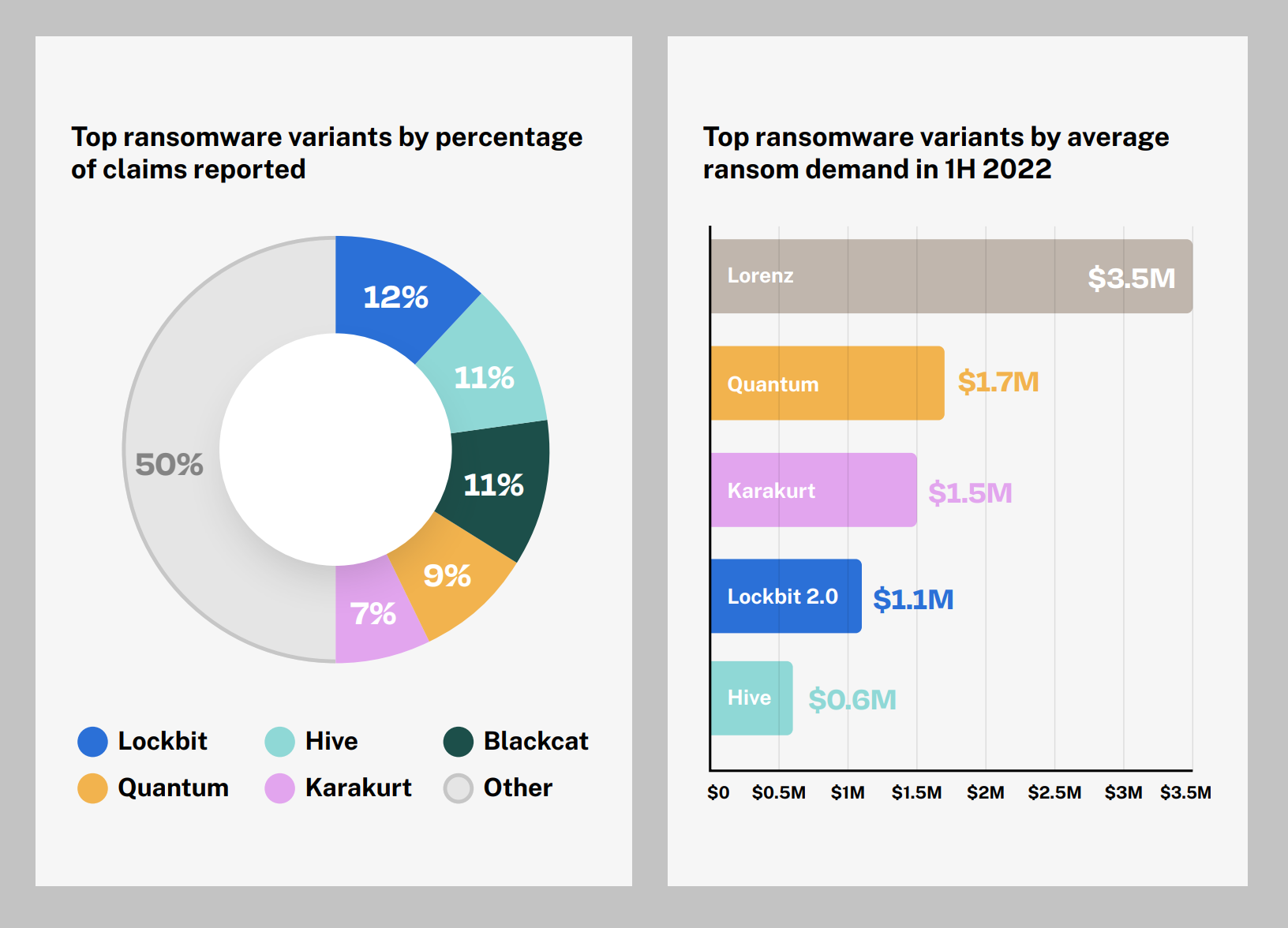In just a few years, we have had multiple cases of cyber security crime intervention and Ransomware attacks in many organizations. Since 2022, hacktivists have caused a surge in the geopolitical situation by hacking the data of well-known organizations and media.
For more than three years, these threat actors hacked some of the most well-known organizations. The ransomware gangs hold hostage by bundling extortion methods making victims pay up after an attack.
One of the most notorious gangs that were said to be related to or leased by Conti is known as Karakurt. The FBI has claimed that they have earned more than $150 million out of these attacks, making them the most costly hacktivists.
It has provoked many tech titans to handle the situation by bringing forward strong security systems that cannot easily be hacked. According to the new report from Coalition, Ransomware attacks diminished from H2 to H1. The research has also highlighted that the frequency of these attacks has gradually faded due to improved security systems.
Moreover, these swindlers have devalued the ransom cases after the security system has gotten smarter than these hacktivists. As per the report by Coalition, payment demand decreased from $1.37 million to $896,000. Duly attacks on a recent organization resulted in an average decrease of 20% in the ransom. The kaleidoscope of events in cyber security produced better control systems around the world.
However, in the same year, cybercrime has been said to be controlled and advanced. In the decline of these crimes, a new statement from Coalition states that most of these hacking is related to phishing emails. These emails enabled threat actors to claim cyber insurance policies.
While reporting suggests 60% claims, increasing 32% from 2021. Simultaneously, the phishing threat also leads to leaking FTF events, which allows the threat actors to steal the funds by messing up the information and redirecting the whole policy.
While the surge in controlling the cyber-attacks settles, small businesses (SMBs) are still struggling to prevent being the victim of Ransomware. Despite the better controlling system, small enterprises continue the evolution of digital well-being.
To avoid such incidents, they are bound to trust the third party to make their system secure. It leaves them more vulnerable to attack because they lack the necessary tools to save their system.
The 2022 reports stem from the Coalition’s North America policyholder. They protect more than 160,000 organizations from Ransomware attacks. The report was originally put together after these organizations complained of not getting access to their system. Cyber-attacks were on the rise at the beginning of 2022 and gradually died down as the controlling system got more creative and astute.
Read next: Top 10 Educational Apps On iOS That Are Sure To Invade Your Privacy
For more than three years, these threat actors hacked some of the most well-known organizations. The ransomware gangs hold hostage by bundling extortion methods making victims pay up after an attack.
One of the most notorious gangs that were said to be related to or leased by Conti is known as Karakurt. The FBI has claimed that they have earned more than $150 million out of these attacks, making them the most costly hacktivists.
It has provoked many tech titans to handle the situation by bringing forward strong security systems that cannot easily be hacked. According to the new report from Coalition, Ransomware attacks diminished from H2 to H1. The research has also highlighted that the frequency of these attacks has gradually faded due to improved security systems.
Moreover, these swindlers have devalued the ransom cases after the security system has gotten smarter than these hacktivists. As per the report by Coalition, payment demand decreased from $1.37 million to $896,000. Duly attacks on a recent organization resulted in an average decrease of 20% in the ransom. The kaleidoscope of events in cyber security produced better control systems around the world.
However, in the same year, cybercrime has been said to be controlled and advanced. In the decline of these crimes, a new statement from Coalition states that most of these hacking is related to phishing emails. These emails enabled threat actors to claim cyber insurance policies.
While reporting suggests 60% claims, increasing 32% from 2021. Simultaneously, the phishing threat also leads to leaking FTF events, which allows the threat actors to steal the funds by messing up the information and redirecting the whole policy.
While the surge in controlling the cyber-attacks settles, small businesses (SMBs) are still struggling to prevent being the victim of Ransomware. Despite the better controlling system, small enterprises continue the evolution of digital well-being.
To avoid such incidents, they are bound to trust the third party to make their system secure. It leaves them more vulnerable to attack because they lack the necessary tools to save their system.
The 2022 reports stem from the Coalition’s North America policyholder. They protect more than 160,000 organizations from Ransomware attacks. The report was originally put together after these organizations complained of not getting access to their system. Cyber-attacks were on the rise at the beginning of 2022 and gradually died down as the controlling system got more creative and astute.
Read next: Top 10 Educational Apps On iOS That Are Sure To Invade Your Privacy

